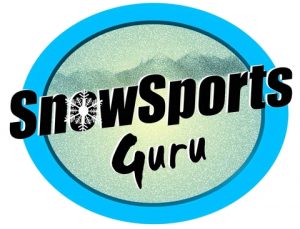There are a wide variety of snowboard shapes available on the market. Snowboard shapes are designed alongside other key snowboard features to make them more suited to a particular type of snowboarding or mountain terrain.
In this guide I outline the different snowboard shapes, explaining how they work and what they can offer your riding.
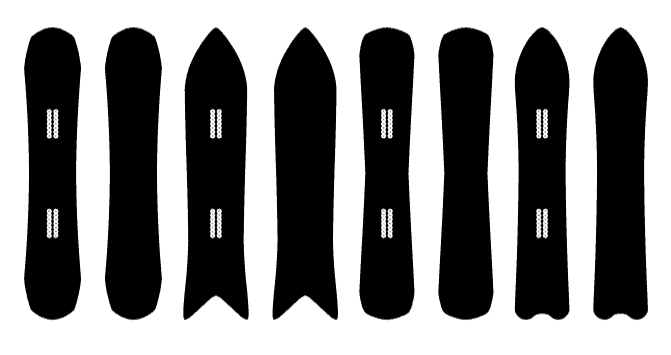
Disclaimer: Some links in this article are affiliate links, which means that if you purchase through them I receive a small commission, at no extra cost to you. This helps cover the cost of running this blog. Thanks for your support!
Types of Snowboard Shapes
Snowboards shapes can vary from brand to brand and year to year. Every shape of snowboard is designed for a certain style of snowboarding or a particular type of terrain.
Many snowboarders will have different snowboard shapes depending on the type of snowboarding they will do that day. For example, I use a twin board when I am instructing since I usually spend a lot of time riding switch and directional boards when I’m riding the resort or on powder days.
There are two broad categories of snowboard shapes.
- Directional
- True Twin
Within these two categories there are several sub-types.
- Directional twin
- Tapered Directional
- Volume shifted
- Asymmetrical
To understand snowboard shape it is good to have a basic knowledge of snowboard sidecut, camber profiles, flex patterns and snowboard stance.
1. Directional Snowboards
Directional snowboards are the original shape snowboard. Since we typically spend most of our time riding in one direction, snowboards were designed for this purpose – go in one direction and do it well.
Directional boards have several characteristics that make them better suited to being ridden in one direction. Firstly they have a longer nose to provide better float in powder and a set back stance to again provide float but also to improve pop and power through turns.
This shape of snowboard will have a directional (progressive) sidecut, a directional flex pattern and usually a directional camber profile. For example, a directional snowboard may have a stiffer tail (flex pattern) and a larger rocker in the nose (camber profile).
Despite having a longer nose, the width of the nose and tail at the contact points is the same.
To learn more about snowboard sidecuts, see this guide.
- Best for: All-mountain, free ride (carving, speed, powder)
- Not suited to: Freestyle (park)
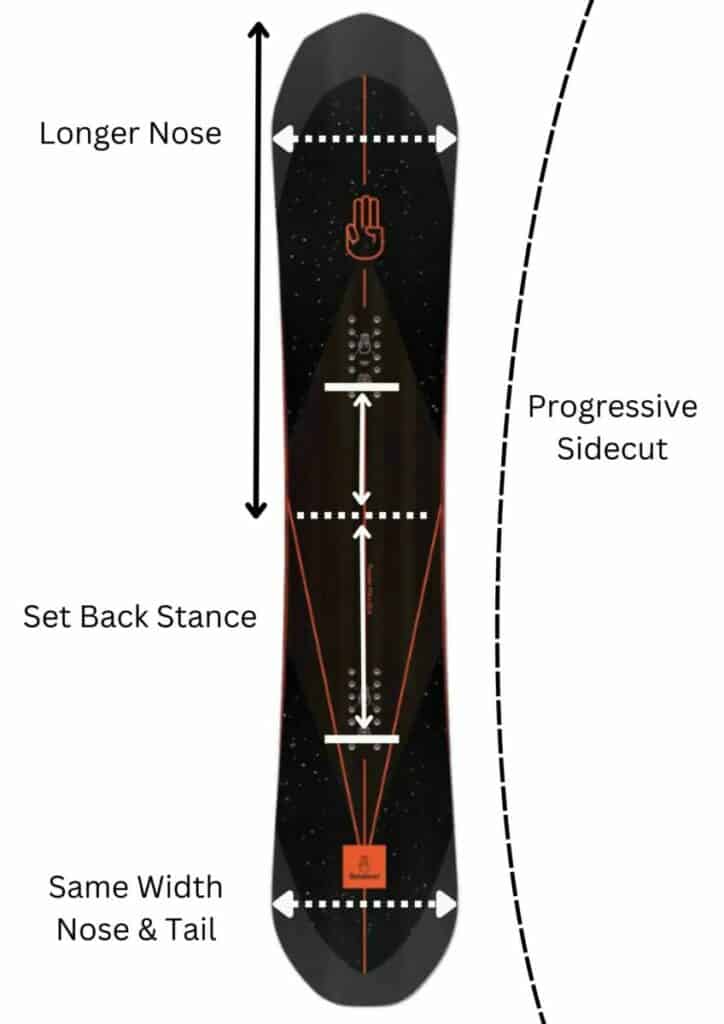
2. True Twin Snowboards
As the name suggests, a true twin snowboard will be completely symmetrical in every way so if you cut the board in half you would two pieces that are identical. The flex, camber profile and sidecut are the same on both the nose and tail of the board. The binding inserts are centred on the board so that the snowboard stance is completely even and the nose and tail lengths are identical.
To learn more about snowboard stance setup, take a look at this guide.
True twin snowboards are designed symmetrically so that the ride will feel balanced and even no matter what direction the board faces. This makes riding switch a breeze and spinning feel even.
- Best for: Freestyle, All-mountain freestyle (terrain park, riding switch, beginners)
- Not suited to: Freeriding (powder)
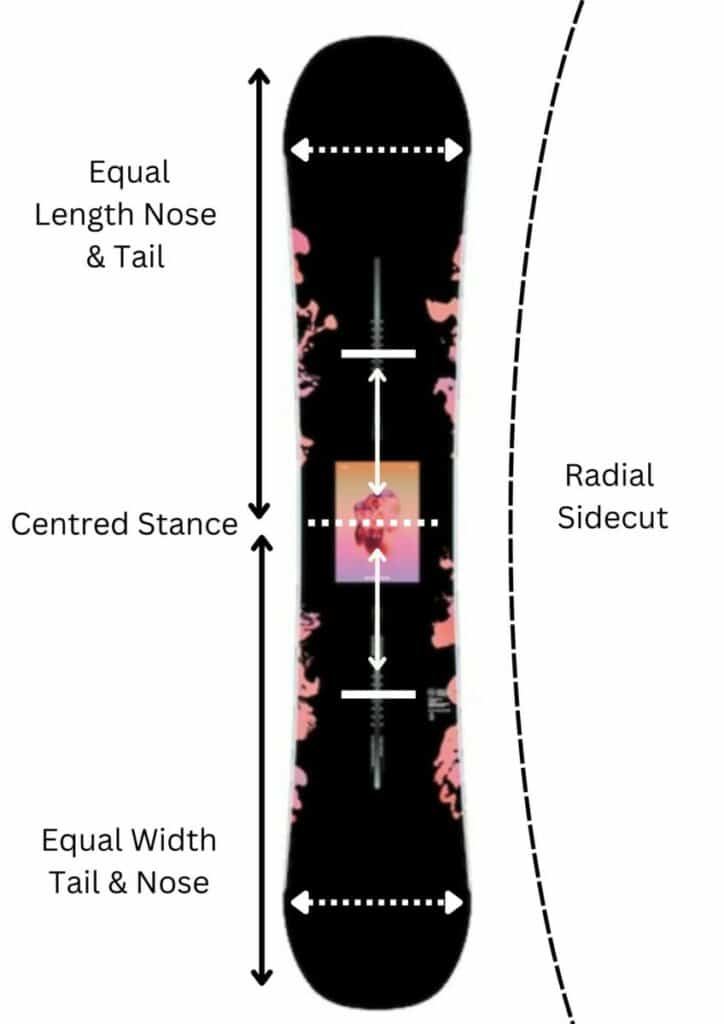
3. Directional Twin Snowboards
This shape of snowboard is a combination of the previous two types and a compromise for those who want the best of both worlds. True twins and directional twins will look very similar and the differences are only subtle.
A directional twin might have a nose that is slightly longer with a directional flex and a stance that is slightly set back. It might have all of these features or just one or two. This type of snowboard will perform well all over the mountain but since it’s typically stiffer than a freestyle board, it will be harder to press, butter and jib.
Since the extra length of the nose is beyond the contact points, you still get the controlled feel of a twin but benefit from a little more float in powder.
- Best for: All-mountain, All-mountain freestyle, beginners (Carving, powder, switch riding)
- Not suited to: Out and out freestyle (buttering and pressing)
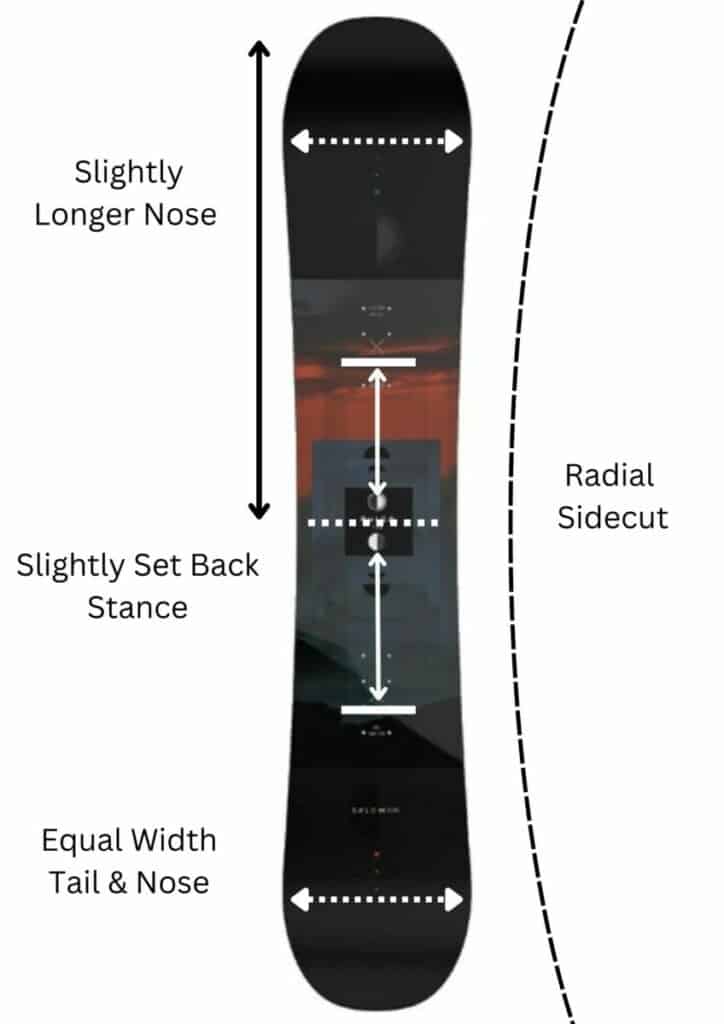
4. Tapered Directional Snowboards
A tapered directional snowboard is a variation of a directional snowboard. It has most of the same features of a directional board but often more pronounced. The nose is usually longer and wider than the tail to provide better float in powder. The nose and tail will usually be different shapes, where the tail can be blunted or even swallow tailed.
The camber profile and flex will be directional and the stance will be set back, all of which provides better control and power out of a turn and easier float in powder conditions. Tapered directional shapes are often just referred to as directional snowboards with the giveaway being the difference shaped nose and tail.
See this guide to learn more about camber vs rocker snowboard profiles.
- Best for: Freeriding (powder, steeps)
- Not suited for: Freestyle (terrain park, switch riding)
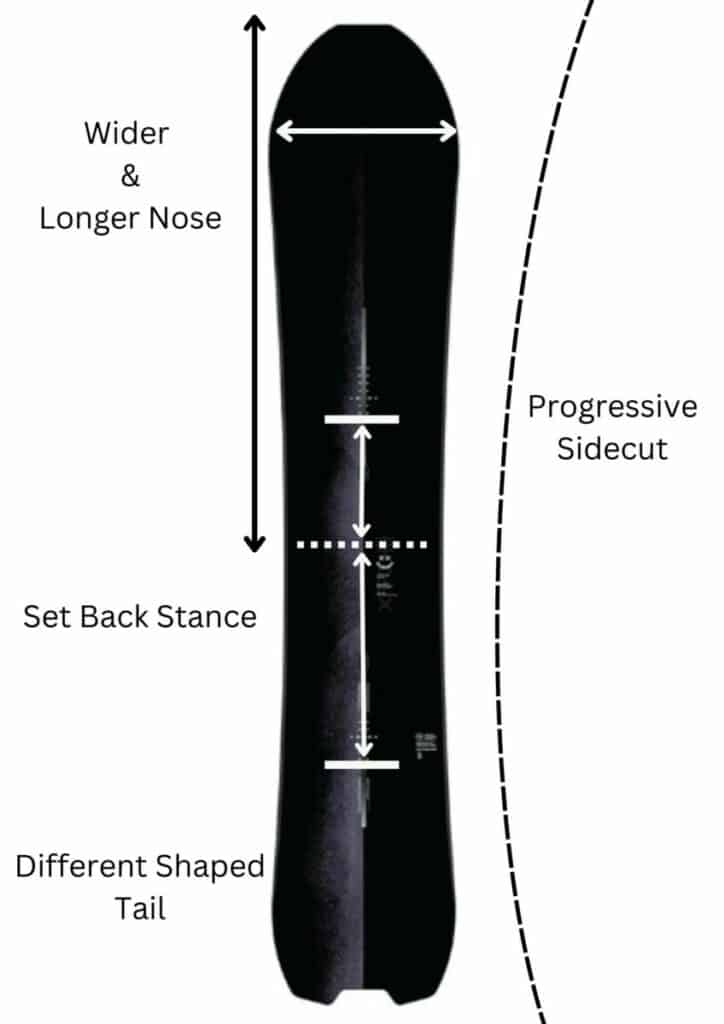
5. Volume Shifted Snowboards
Volume shifted snowboards are boards that are short and wide. Traditionally, longer snowboards have been preferred in deep powder conditions to provide more float, however volume shifted snowboards trade in length for width.
The board has the same surface area which means there is still plenty of float but since the board is much shorter, the result is more manoeuvrability. This makes ducking through dense trees much easier and allows for a more playful, surf-type feeling.
These snowboards are another variation of the directional shape so share most of the same characteristics such as having a set back stance, longer and wider nose, directional flex, camber and sidecut.
Volume shifted snowboards are meant to be 3-6cm shorter than your normal/ideal length snowboard.
- Good for: Freeriding, backcountry (powder and tree runs)
- Not suited to: Carving, choppy snow, riding switch
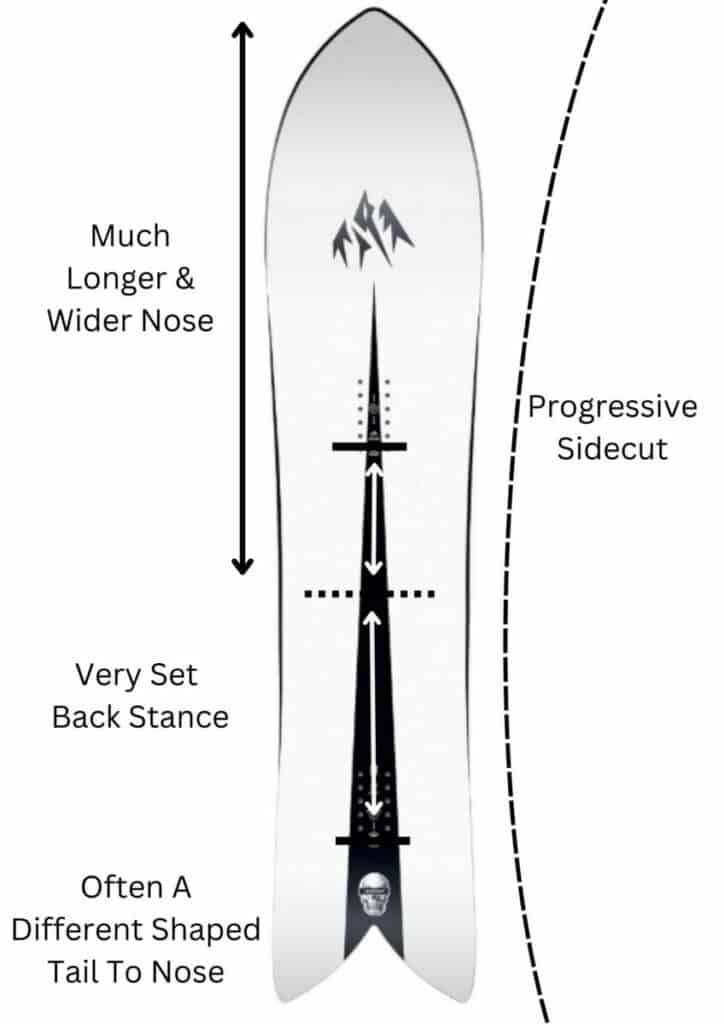
6. Asymmetric Snowboards
Asymmetrical snowboards have a sidecut that is shorter and/or deeper on the heel edge. They may also have an asymmetrical core makeup so that the heel side has a softer core than the toe side.
These features are designed to allow for the fact that when we stand (or slide) sideways we are not symmetrical. Leaning backwards into the heel edge is a different motion to leaning forwards into the toe edge, which heel side turns often feeling more difficult to initiate. Having an asymmetrical sidecut and core compensates to allow for easier turns on the heel edge.
- Best for: All riders can benefit from this shape although asymmetric features are usually only found on twin boards.
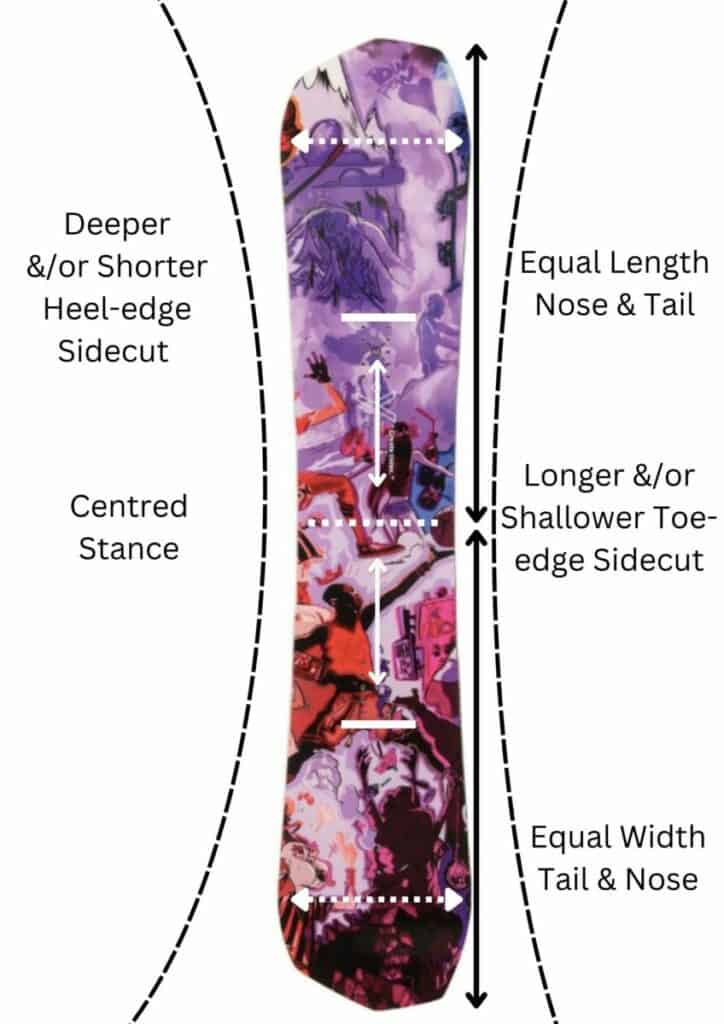
Related Reading
- What is Magne Traction on a snowboard?
- How to choose the best snowboard bindings
- A guide to snowboard boot flex
The Best Snowboard Shape for Beginners
Choosing the best snowboard shape is determined by the style of riding you enjoy and the type of terrain you prefer to spend most of your time on. As a complete beginner you won’t know what style of rider you are yet so the best choice is a board that is easy to learn on.
As a complete beginner you might not know whether you are a goofy rider or a regular rider so in this instance a true twin board would be a good bet. In fact, a true twin is a good choice for many beginners and those moving into intermediate, as they good for encouraging switch riding which is a great skill to learn early on.
Other good board shape choices for beginners are directional or directional twins, as long as the flex rating isn’t too high ie. the board isn’t too stiff. Stiff boards can be difficult to manoeuvre so are best avoided as a beginner.
Snowboard Shapes Guide Summary
Snowboards can be shaped in a variety of ways. The two main types of snowboard shapes are twin and directional. Twin snowboards are typically better for freestyle riding and directional snowboards are typically better for free riding. Within these two broad categories there are several sub-types which may contain elements of both or elements that are more pronounced.
Snowboard shapes are designed in correlation with other features which make them better suited to a type of riding or terrain. Which type of snowboard shape is best for you, therefore depends on the style of riding you prefer.
